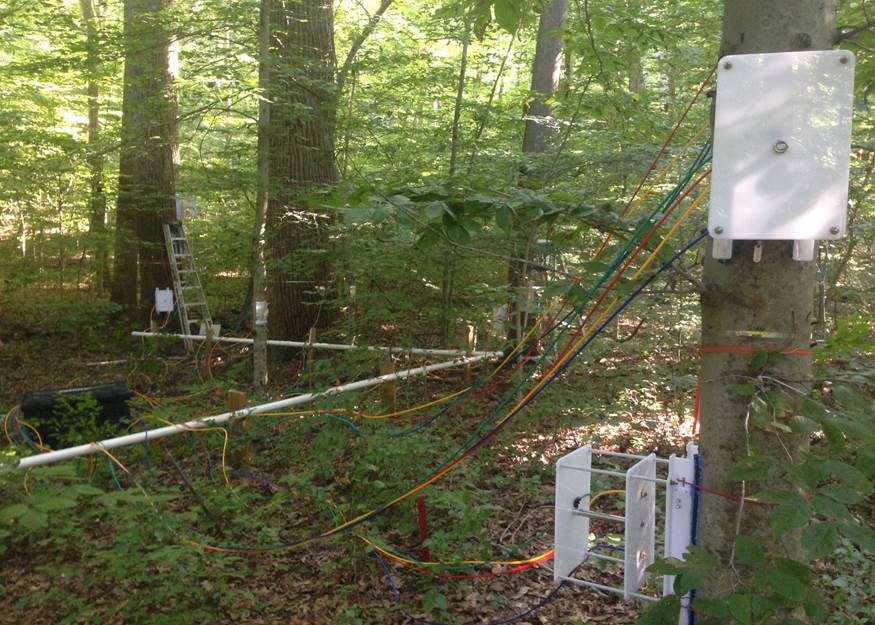by Ryan Greene

Rainbow-colored tubes snake through the undergrowth. White acrylic chambers sit mounted to tree trunks like giant bleached snails. At first glance, it’s not quite clear what the heck is going on. Cryptic as it may seem, these tubes and chambers are the key to a recent study showing that trees in upland forests are capable of emitting the planet-warming greenhouse gas, methane.
Scientists have long considered upland forests to be methane sinks due to the presence of methane-hungry microbes called methanotrophs in their soils. But new research by Pat Megonigal, an ecosystem ecologist who heads up the Biogeochemistry Lab at the Smithsonian Environmental Research Center (SERC), and Scott Pitz, a graduate student from Johns Hopkins, has shown that when it comes to upland forest methane cycling, soil isn’t the only game in town. Trees and their emissions are part of the equation too.
In a recently published study in New Phytologist, Megonigal and Pitz found that trees in upland forests are actually capable of emitting methane through their trunks. This means that some of the methane absorbed by methanotrophs in the forest soils may be offset by tree emissions.
